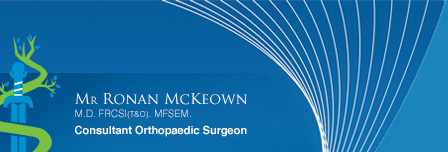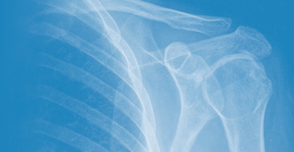|
Therapist Information and
Guidelines
Subacromial Decompression
Print
Friendly PDF Page (Click Here)
This procedure increases the
size of the subacromial space.
Evidence of inflammation or scuffing on the
under surface of the acromion, coraco-acromial
ligament and on the bursal side of the rotator
cuff ("kissing lesion") indicates the presence
of an impingement. The operation may involve the
removal of anterior osteophytes, bursectomy,
partial resection of the coraco-acromial
ligament and anterior acromioplasty. The
acromioclavicular joint (ACJ) remains is not
violated unless excision is clinically
indicated. If resected, the superior AC ligament
remains intact so that the joint remains stable.
The shoulder can remain painful
for a significant amount of time, therapy should
not cause an increase in the patients level of
pain.
Patient’s are informed
pre-operatively to expect improvement in their
symptoms in the order of 10% per month.
Post Op
Patients wear a polysling
initially for pain management, this should be
discarded as pain allows over the 1st 1-2 weeks.
The sling is for comfort and can
be removed for hygiene needs and physiotherapy
exercises.
Day 1
Finger, wrist, R/U
joint and elbow exercises.
Gentle pendular exercises.
Teach postural awareness and scapular setting.
Teach pendular exercises.
> 1 - 2 Weeks
Active assisted glenohumeral
movements in all planes and pulley exercises,
moving into range as pain allows.
Progress to active exercises, increasing range
as pain allows.
Commence isometric rotator cuff strengthening
and progress as pain allows.
Progress to isotonic strengthening through range
when pain allows.
Continue with scapular stability exercises.
Over-zealous physiotherapy and
repetitive or sustained overhead activities
could lead to delayed recovery.
6 Weeks
Manual therapy to increase ROM
if necessary (do not force into pain).
Milestones:
Patient should have regained
pre-op range of movement by 6 weeks.
Some discomfort with movement above 90° is
normal - patient should be advised to avoid
pushing into pain and to avoid any aggravating
activities.
Progress of patients with ACJ excision may be
slower.
It is important to avoid repetitive or
sustained overhead activity at or above the
shoulder height for 3 months.
Aims of Physiotherapy:
Achieve full range of movement.
Improve postural awareness and initiate scapula
stability.
Strengthen the rotator cuff.
Restore proprioception using open and closed
chain activities.
If the rotator cuff is deficient, strengthen
anterior deltoid in supine to compensate.
Return to
Functional Activities
These are approximate guidelines
only as each patient will progress at a
different rate. These should be seen as the
earliest that these activities may commence.
Driving: 1 - 2 Weeks
(only if patient feels they are safe)
Return to work: Dependant on
patients occupation
Manual job: may need to modify activities for 3
months
Swimming: Breaststroke: 2-3
weeks
Freestyle: 3 months
Golf: 6 weeks (not driving
range)
Lifting: As able
Racquet sports: Sport specific
training when comfortable
Competitive play after 3 months
Should be guided by the surgeon
|







